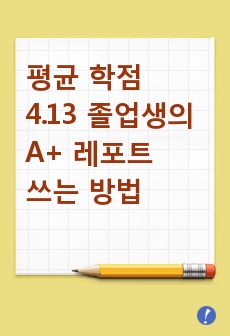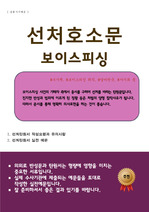* 본 문서는 배포용으로 복사 및 편집이 불가합니다.
서지정보
ㆍ발행기관 : 한국한자한문교육학회
ㆍ수록지정보 : 漢字漢文敎育 / 33권
ㆍ저자명 : 安載澈
ㆍ저자명 : 安載澈
목차
Ⅰ. 緖論Ⅱ. 形態論 敎育論 硏究
2.1 形態論 敎育의 目標
2.2 形態論 敎育의 內容
2.3 形態論 敎育論 敎授法
2.4 形態論 敎育論 評價法
Ⅲ. 結論
한국어 초록
이 논문은 한국에서 한문문법 형태론 교육이 이루어져야 할 연구 방향을 제시 한 논문이다. 이 논문에서 주로 초점을 맞추어 살펴보려 한 것은 한국인이 한문문 법 형태론 지식을 통해, 흥미를 가지고 漢文 原典에 다가가 해석 능력을 향상시키 는 것과 敎授者 입장에서 학습자에게 형태론적으로 한문을 교육시키는 것을 연구 하는 것이다. 즉, 이 논문에서 주로 살펴 보려한 것은 형태론 교육의 목표, 형태론 교육의 내용(품사론, 어휘 분류와 방법), 형태론 교육론의 교수법, 형태론 교육론 의 평가법 등이다. 1. 형태론 교육의 목표 1.1 형태소의 개념과 유형을 안다. 1.2 형태소의 기능과 의미구조에 대하여 안다. 1.3 형태소와 형태소의 결합관계를 안다. 1.4 품사의 개념과 분류 기준을 안다. 1.5 단어의 분류와 그 방법을 안다. 1.6 허사의 기능을 안다. 2. 형태론 교육의 내용 2.1 품사론 2.1.1 ‘品詞’는 단어(어휘)를 의미와 기능에 따라 분류하여 공통된 성질을 가진 것끼리 모아 놓은 단어들의 갈래다. 단어는 보편적으로 문법적 특성에 따라 가름한다. 문법적 특성은 형태(form), 의미(meaning), 기능 (function)에 따른 특성이며, 이 기준에 따라 구분한 單語(語彙)群을 ‘품 사’라 하고, 이러한 ‘품사에 대한 연구’를 ‘品詞論’이라 한다. 2.1.2 한국 학교문법에서는 품사를, 10품사로 구분하고 있다. 10품사는 實詞와 虛詞로 구분한다. ‘實詞’에 속하는 품사로는 名詞, 代名詞, 數詞, 動詞, 形容詞, 副詞 등이 있고, ‘虛詞’에 속하는 품사로는 介詞(前置詞), 連詞 (接續詞), 語助詞, 感歎詞 등이 있다. 2.2 單語(語彙) 分類와 그 方法 2.2.1 漢字語의 性格: 현재 사용하고 있는 어휘의 개념은 단어, 낱말, 語詞, 한 자어 등의 개념과 유사한 개념으로 統稱되고 있다. 한자어의 성격은 한문 체계로 보면, 한자어는 漢字, 漢字語, 漢字成語로 이루 어진 ‘漢字 語彙’의 한 갈래로써, 한문의 單語, 句, 文章의 기능을 모두 포함하게 되는 문법 구조를 이루고 있다. 한문 체계 속에서 볼 때, 한자는 한자어와 명확하 게 구분된다. 한자는 그 자체로 문법 구조를 이루고 있지 못하지만, 한자어는 단 어, 어휘이면서 문장의 통사 구조를 갖추고 있다. 한문 체계에서 한자어는 2~3음 절의 어휘만을 일컫는 것이 타당성이 있다 할 수 있다. 2.2.2 漢字語 語彙의 分類: 近代以前은 ‘漢文文語’에 나타나는 한자어를 중심 으로 하고, 근대이후는 ‘신생 한자어휘’ 연구를 중심으로 하고자 한다. 2.2.3 單語의 形成 方法에 따른 分類: 單語는 일반적으로 單純語와 複合語로 나뉜다. 단순어는 다시 單音節單純語와 多音節單純語로 구분하고, 복합 어는 다시 合成語와 派生語로 구분한다. 合成語는 다시 類似語와 相對語, 統辭的 構造語로 나누고, 派生語는 ‘基語+接辭’의 구조로 된 것과 ‘接辭+ 基語’로 된 것으로 나뉜다. 2.3 形態論 敎育論 敎授法 2.3.1 語彙에 관한 敎授法에 대한 硏究는 單語의 짜임의 경우, ‘造語分析法’ 등의 교수 수업 방법이, 단어의 갈래 및 어휘(성어)의 경우는 ‘言語活用法’ ‘索出法’, ‘比較學習法’ 등이 효과적이다 할 수 있다. 2.3.2 語彙의 字義와 語義에 도움이 되도록 하기 위한 교수법으로는, ‘字義 분 석을 통한 지도방안’과 ‘語義 분석을 통한 지도 방안’이 효과적이라 할 수 있다. 2.3.3 多音節 語彙의 敎授․學習法으로는, ‘故事成語’의 경우, 기존의 ‘토의학 습법, 역할놀이 학습법’등이 있다. 이외에, 壓縮性을 띤 다음절 어휘는 ‘이야기를 중심으로 이해하는 학습법’, 隱語的 성격을 띤 어휘는 ‘어휘를 變容 활용하여 특징을 이해하는 학습법’, 형용적인 성격을 띤 다음절 어 휘는 ‘擬聲語와 擬態語의 특징을 이해하는 학습법’이 효과적이다. 2.4 形態論 敎育論 評價法 硏究漢文(文言文)에 대한 형태론 교육론 평가는 형태론의 교수- 학습 연장선상에 서 이루어져야 한다. 또한 한문과 형태론 교육론의 평가는 궁극적으로 다른 언어 와 마찬가지로 형태소들의 문법적 기능과 의미기능, 결합의 원리들을, 실제의 자 료를 통해 학습자 스스로 발견하게 하고, 그 과정에서 관찰력, 판단력, 분석력, 종 합력 등을 평가하여야 할 것이다. 한국에서 형태론 교육론 평가법은 현행 중․고등학교 한문교과에, 현행 교육과 정에 기반을 둔 漢文科 成就基準 및 成就水準이 개발이 되어 있다. 본고에서는 중학교 어휘 영역의 성취 기준 및 성취 수준의 경우만을 살펴보았다. 2.4.1 中學校 漢文 語彙領域의 成就基準 및 成就水準 중학교 한문교과의 ‘어휘’ 영역의 교육과정 내용과 성취기준 그리고 단위 성취 수준에 대한 記述은 교육과정 어휘영역에 대한 각각의 내용요소에 대하여 성취 기준을 상세하게 마련하였으며, 각 성취기준에 따라 성취수준을 다시 ‘상, 중, 하’ 의 3단계로 설정하였다. 그리고 어휘영역의 성취기준 단위 성취수준을 기술할 경우, 성취수준(상, 중, 하)간에 질적인 차이를 구분할 때, ‘상’수준은 ‘설명할 수 있다’, ‘중’ 수준은 ‘말할 수 있다’, ‘하’ 수준은 ‘조사할 수 있다’라는 行動動詞를 사용하였다. 또한 ‘상’ 수 준에서는 ‘구별하다’, ‘활용하다’ 등의 어휘를 사용하여 ‘중’ 수준과 도달한 정도 에 차이를 두어 구별하였다.영어 초록
This thesis suggests the research direction of educating morphology of Classical Chinese Grammar in Korea. This thesis mainly focuses on two things. First, developing Korean’s interpretation ability to the original text through the knowledge about morphology of Classical Chinese Grammar. Second, studying the way instructors teach Classical Chinese in morphological methods. In other words, we will look through the objects, contents, instructing methods and evaluation method of educating morphology. The objects of educating morphology 1.1 Know the concept and type of morpheme. 1.2 Know the function and structure of morpheme. 1.3 Know the combination relationship of morpheme. 1.4 Know the concept and classification of a part of speech. 1.5 Know the classification of words. 1.6 Know the function of an expletive. 2. The contents of educating morphology 2.1 Theory of a part of speech 2.1.1 ‘A part of speech’ is the group of words with similar characteristics classified according to functions and meanings. Generally, words are classified by grammatical features. Grammatical features includes forms, meanings and functions. A group of words that are sorted by these features is called ‘A part of speech’, and the research about these groups of words is called ‘Theory of a part of speech’. 2.1.2 Words are grouped in ten parts in Korean school. Ten parts of speech are sorted to a substantive and an expletive. A substantive contains a noun, a pronoun, a numeral, a verb, an adjective and an adverb. An expletive includes a preposition, a conjunction, a particle and an exclamation. 2.2 Classification of words 2.2.1 Characteristics of ‘Classical Chinese words’ : ‘Classical Chinese vocabulary’ consists of ‘characters’, ‘words’, and ‘idioms’ in the respect of system of Classical Chinese. ‘Classical Chinese words’ are one part of ‘Classical Chinese vocabulary’ and make grammatical structure that contains the functions of words, phrases and sentences. In the system of Classical Chinese, ‘Classical Chinese characters’ are clearly different from ‘Classical Chinese words’. ‘Classical Chinese characters’ cannot make grammatical structures, but ‘Classical Chinese words’ make syntax structure of sentences. It is proper to say that ‘Classical Chinese words’ are di- or trisyllabic words in the system of Classical Chinese. 2.2.2 Classification of ‘Classical Chinese words’ : This study mainly focuses on ‘Written language’ before modern ages, and ‘newly made words’ after modern ages. 2.2.3 Classification of words by formation methods : In general, words are sorted to ‘Simplex’ and ‘Compound’. ‘Simplex’ consists of monosyllabic simplex and multisyllabic simplex. ‘Compound’ consists of compound, which is classified to an analogous term, a relative term and structural term, and derivative, which is classified to ‘root+affix’ structure and ‘affix+root’ structure. 3. Instructing method of morphology 3.1 When educating the organization of words, ‘Coined-word segmentalization method’ is effective, and when educating the sort of words, ‘Language-application method’, ‘Search-out method’, and ‘Comparativelearning method’ are effective. 3.2 ‘Instructing method through analyzing meanings of characters’ and ‘Instructing method through analyzing meanings of words’ are helpful to educating characters of Classical Chinese and words of Classical Chinese, respectively. 3.3 When educating multisyllabic vocabulary, ‘discussion, play-a-role method’, ‘comprehending-through-tales method’, ‘comprehending-transformative-use-of-vocabulary method’, ‘comprehending-characteristics-of-onomatopoeic-and-mimesis method’ are effective to teaching idioms, compressive words, argot, and adjective words, respectively. 4. Evaluation method of instructing morphology Evaluation of instructing morphology about Classical Chinese should be done as an extension of ‘teaching and learning morphology’ Instructing morphology about Classical Chinese can be evaluated by following questions. “Can learners find, by on their own, grammatical functions, meanings and combination principles of morphemes through real materials?” And we can evaluate learners abilities of observation, judgement, analysis and synthesis in that process. In Korea, achievement levels and standards are developed, which are based on current curriculum of Classical Chinese subject in middle․high school. So we studied evaluation method of instructing morphology by these criteria.참고 자료
없음태그
"漢字漢文敎育"의 다른 논문
 析論香港中學文言文的教學難點及其策略20페이지
析論香港中學文言文的教學難點及其策略20페이지 漢字的腦和教育18페이지
漢字的腦和教育18페이지 網上漢字知識庫的構思21페이지
網上漢字知識庫的構思21페이지 ‘漢字 解讀’과 ‘讀者의 背景 知識’의 相互 作用을 通한 漢文 讀解 敎育 試論19페이지
‘漢字 解讀’과 ‘讀者의 背景 知識’의 相互 作用을 通한 漢文 讀解 敎育 試論19페이지 促進非華語中學生學習漢語 -「閱讀促進學習」 結合圖畫書教學初探-29페이지
促進非華語中學生學習漢語 -「閱讀促進學習」 結合圖畫書教學初探-29페이지 公益廣告를 活用한 漢字․漢文 敎授, 評價에 대한 연구41페이지
公益廣告를 活用한 漢字․漢文 敎授, 評價에 대한 연구41페이지 電子學習對香港小學生書寫漢字的影響29페이지
電子學習對香港小學生書寫漢字的影響29페이지 貞軒 李家煥의 物名에 관한 관심과 그 실천 -『貞軒鎖錄』과 『雜說』을 중심으로-43페이지
貞軒 李家煥의 物名에 관한 관심과 그 실천 -『貞軒鎖錄』과 『雜說』을 중심으로-43페이지 茶山 丁若鏞의 兒童敎育 改善에 대한 總體的 考察37페이지
茶山 丁若鏞의 兒童敎育 改善에 대한 總體的 考察37페이지 汉字实现方式的变革给汉字带来的变化20페이지
汉字实现方式的变革给汉字带来的变化20페이지

























